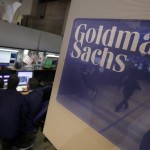Yesterday’s trade (in GMT terms) saw GBP/USD within the range of 1.3139-1.3243. The pair closed at 1.3235, edging up 0.30% compared to Tuesdays close. It has been the 155th gain in the past 338 trading days. The daily low has been a level unseen since September 1st, when a low of 1.3128 was registered. The major pair has increased its advance to 0.73% so far during the current month, after losing 0.72% in August.
At 6:56 GMT today GBP/USD was edging down 0.16% on the day to trade at 1.3214. The pair touched a daily high at 1.3281 during the early phase of the Asian trading session, undershooting the upper range breakout level (R4), and a daily low at 1.3213 during early European trade.
On Thursday GBP/USD trading may be influenced by the following macroeconomic reports and other events as listed below.
Fundamentals
United Kingdom
Retail Sales
Annualized retail sales in the United Kingdom probably rose at a rate of 5.4% in August, according to the median forecast by experts, after in July sales increased by another 5.9%. If expectations were met, August would be the 41st consecutive month of sales growth.
In monthly terms, retail sales probably shrank 0.4% in August, according to market expectations. In July sales at retailers rose 1.4%, or at the fastest monthly rate since April, when a revised up 1.8% surge was reported. In July, sales at non-specialized stores rose the most (up 3.9% month-over-month), followed by sales of textiles, clothing and footwear (up 3.5%), food (up 0.6%) and auto fuel (up 0.6%).
Annualized retail sales, without taking into account fuel sales, probably surged 5.0% in August, following a 5.4% growth in July. If expectations were met, August would be the 52nd consecutive month of growth in annual core sales.
Retail sales represent a short-term indicator, which provides key information about consumption on a national scale. Lower retail sales suggest weaker consumer demand, confidence and economic growth, respectively. Therefore, in case the general index of retail sales decreased at a faster-than-expected monthly rate in August, this would have a strong bearish effect on the Sterling. The Office for National Statistics is expected to publish the official report at 8:30 GMT.
Bank of England policy decision
At 11:00 GMT Bank of England is to announce its decision on monetary policy. The benchmark interest rate (repo rate) will probably be left intact at the record low level of 0.25%, according to market expectations. The repo rate applies to open market operations of the central bank with other banks, building societies, securities firms etc.
At the same time, the pace of BoE’s monetary stimulus will probably be left without change at GBP 435 billion. The scale of the asset-purchasing program, financed by the issuance of central bank reserves, was increased by GBP 60 billion to the current GBP 435 billion at the Bank’s August 4th meeting.
The minutes from BoE’s policy meeting may reveal that all 9 members of the Monetary Policy Committee voted in favor of keeping borrowing costs and the stock of purchased assets intact.
According to extracts from the Monetary Policy Statement, released in August: ”The cut in Bank Rate will lower borrowing costs for households and businesses. However, as interest rates are close to zero, it is likely to be difficult for some banks and building societies to reduce deposit rates much further, which in turn might limit their ability to cut their lending rates. In order to mitigate this, the MPC is launching a Term Funding Scheme (TFS) that will provide funding for banks at interest rates close to Bank Rate.”
”The expansion of the Bank of England’s asset purchase programme for UK government bonds will impart monetary stimulus by lowering the yields on securities that are used to determine the cost of borrowing for households and businesses.”
”The MPC can act further along each of the dimensions of the package by lowering Bank Rate, by expanding the TFS to reinforce further the monetary transmission mechanism, and by expanding the scale or variety of asset purchases. If the incoming data prove broadly consistent with the August Inflation Report forecast, a majority of members expect to support a further cut in Bank Rate to its effective lower bound at one of the MPC’s forthcoming meetings during the course of the year. The MPC currently judges this bound to be close to, but a little above, zero.”
United States
Initial, Continuing Jobless Claims
The number of people in the United States, who filed for unemployment assistance for the first time during the business week ended on September 9th, probably rose to 265 000, according to market consensus, from 259 000 in the preceding week. The latter has been the lowest number of claims since mid-July.
The 4-week moving average, an indicator lacking seasonal effects, was 261 250, marking a decrease by 1 750 compared to the preceding week’s unrevised average.
The business week, which ended on September 2nd, has been the 79th consecutive week, when jobless claims stood below the 300 000 threshold, which suggested a healthy labor market. It has been the longest streak since 1970.
Initial jobless claims number is a short-term indicator, reflecting lay-offs in the country. In case the number of claims met expectations or increased further, this would have a moderate bearish effect on the US dollar.
The number of continuing jobless claims probably dropped to the seasonally adjusted 2 140 000 during the business week ended on September 2nd, according to the median forecast by experts, from 2 144 000 in the preceding week. The latter represented a decrease by 7 000 compared to the revised down number of claims reported in the week ended on August 19th. This indicator reflects the actual number of people unemployed and currently receiving unemployment benefits, who filed for unemployment assistance at least two weeks ago.
The US Department of Labor is to release the weekly report at 12:30 GMT.
Producer Prices
Annual producer prices in the United States probably rose 0.1% in August, according to the median estimate by experts. In July prices unexpectedly went down at an annual rate of 0.2%. In case annual producer prices rose at a faster rate than anticipated, this would have a limited-to-moderate bullish effect on the US dollar.
The nation’s annualized core producer price inflation, which excludes prices of volatile categories such as food and energy, probably accelerated to 1.0% in August from 0.7% in July. The latter has been the slowest annual increase in the core PPI since January, when the index gained 0.6%. The Bureau of Labor Statistics is expected to report on the official PPI performance at 12:30 GMT.
Retail Sales
Retail sales in the United States probably dropped 0.1% in August from a month ago, according to the median forecast by experts, after unexpectedly remaining flat in July.
Among the 13 major categories, 5 registered growth, 2 registered a decline and 6 recorded no change in July.
In annual terms, retail sales increased 2.3% in July, or at the slowest rate since March, following a 2.7% climb in June.
US core retail sales, or retail sales ex autos, probably rose 0.3% in August compared to a month ago, according to expectations, following a 0.3% slump in July. The latter has been the first drop in five months and also the steepest one since September 2015. This indicator removes large ticket prices and historical seasonality of automobile sales.
In case the general index of sales fell at a sharper rate than anticipated in August, this would have a strong bearish effect on the US dollar. The official report by the US Census Bureau is due out at 12:30 GMT.
Industrial Production
Industrial output in the United States probably shrank 0.3% in August, according to market expectations. In July the index of production surged at a monthly rate of 0.7%, or the fastest since November 2014.
In July, output in the US mining sector rose 0.7%, as increases in the index for oil well drilling and servicing and the index for coal mining neutralized declines in the gauge for oil and gas extraction and that for non-metallic mineral mining.
The gauge for utilities registered a 2.1% monthly surge in July, as demand for air conditioning was bolstered due to warmer-than-usual weather for that period of the year.
Manufacturing production, which accounts for almost three quarters of total industrial production, expanded 0.5% in July from a month ago, as production of durables, non-durables and that in other manufacturing areas (publishing and logging) rose 0.5% each.
A larger-than-projected monthly decline in the index would usually have a moderate bearish effect on the US dollar. The Board of Governors of the Federal Reserve is to release the official production data at 13:15 GMT.
Bond Yield Spread
The yield on UK 2-year government bonds went as high as 0.256% on September 14th, or the highest level since June 27th (0.260%), after which it closed at 0.178% to lose 3.1 basis points (0.031 percentage point) compared to September 13th.
Meanwhile, the yield on US 2-year government bonds climbed as high as 0.802% on September 14th, after which it fell to 0.762% at the close to lose 4 basis points (0.04 percentage point) compared to September 13th.
The spread between 2-year US and 2-year UK bond yields, which reflects the flow of funds in a short term, narrowed to 0.584% on September 14th from 0.593% on September 13th. The September 14th yield spread has been the lowest one since August 18th, when the difference was 0.568%.
Daily, Weekly and Monthly Pivot Levels
By employing the Camarilla calculation method, the daily levels of importance for GBP/USD are presented as follows:
R1 – 1.3245
R2 – 1.3254
R3 (Range Resistance – Sell) – 1.3264
R4 (Long Breakout) – 1.3292
R5 (Breakout Target 1) – 1.3326
R6 (Breakout Target 2) – 1.3340
S1 – 1.3225
S2 – 1.3216
S3 (Range Support – Buy) – 1.3206
S4 (Short Breakout) – 1.3178
S5 (Breakout Target 1) – 1.3144
S6 (Breakout Target 2) – 1.3130
By using the traditional method of calculation, the weekly levels of importance for GBP/USD are presented as follows:
Central Pivot Point – 1.3318
R1 – 1.3397
R2 – 1.3526
R3 – 1.3605
R4 – 1.3684
S1 – 1.3189
S2 – 1.3110
S3 – 1.2981
S4 – 1.2852
In monthly terms, for GBP/USD we have the following pivots:
Central Pivot Point – 1.3126
R1 – 1.3387
R2 – 1.3634
R3 – 1.3895
R4 – 1.4155
S1 – 1.2879
S2 – 1.2618
S3 – 1.2371
S4 – 1.2123





